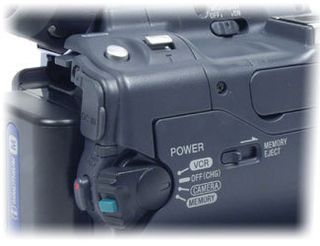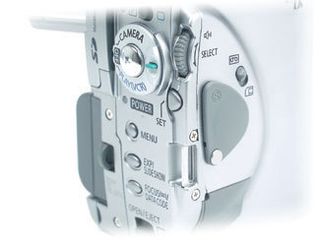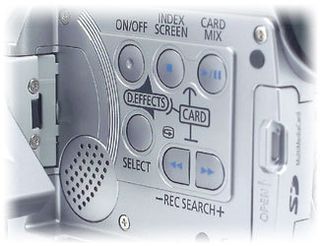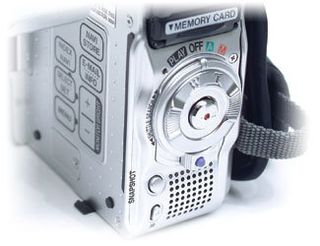Comparison of Four 800,000-Pixel Camcorders
Control Layout
Which of these camcorders is the most agreeable to use? Some details are quite revealing, such as where the cassette is loaded. If it loads at the bottom of the device (as in the Sony DCR-TRV22), it will be quite hard to reload a film when the camcorder is set on a stand. While the Hitachi DZ-MV350 is top-loading, you have to be patient, because the flap takes eight seconds to open and you have to allow for the time taken to access the disc. And if you have a blank DVD, it has to be formatted first (ten minutes). So you'd better get these formalities over with before you go to the church for the wedding.

Sony DCR-TRV22

Hitachi DZ-MV350
Another important point is battery charging. If a separate charger is supplied (Canon Elura 50), you can film with one battery while another (an option) is charging. Models where the battery is charged directly on the camcorder (Sony DCR-TRV22) will be out of action for the time it takes to recharge (the battery will not charge when the camcorder is run on mains power).


Canon Elura 50
The manufacturers have this irritating habit of concealing most of the controls under the LCD screen or even inside (Sony DCR-TRV22). The only model with the controls on the surface is the JVC GR-DX95, but its buttons are still hard to use because they are not intuitive and require some fiddling.


JVC GR-DX95
Stay on the Cutting Edge
Join the experts who read Tom's Hardware for the inside track on enthusiast PC tech news — and have for over 25 years. We'll send breaking news and in-depth reviews of CPUs, GPUs, AI, maker hardware and more straight to your inbox.
We found the Canon Elura 50 the easiest to use. Unlike the others, you don't have to pull out the viewfinder to power it, the controls are surface-accessed and the device is beautifully compact for the wandering video-maker. By the way, if you to invest in a lamp or external mike, make sure your camcorder actually has a hot-shoe contact for them. The Canon and JVC don't...
Most Popular

